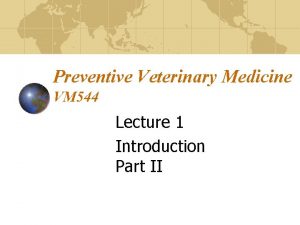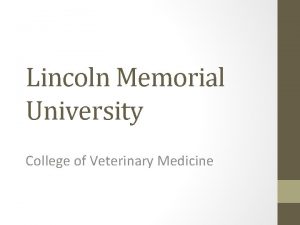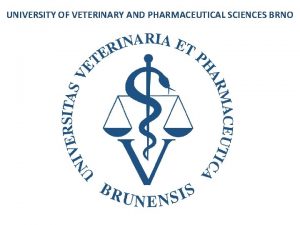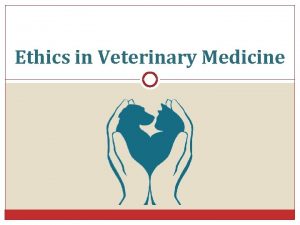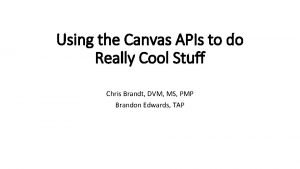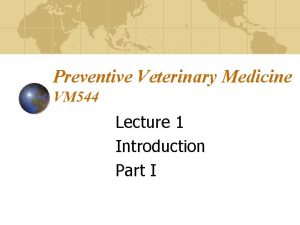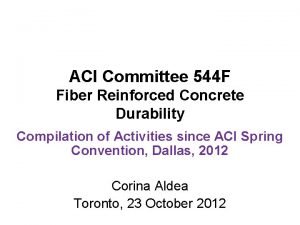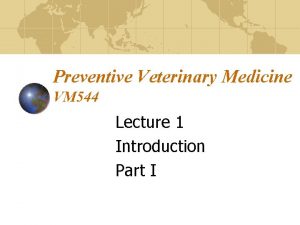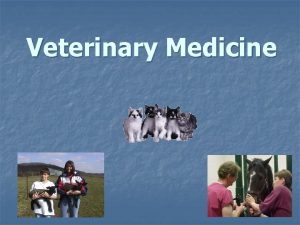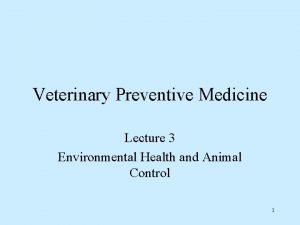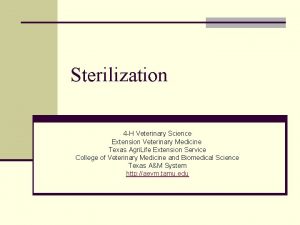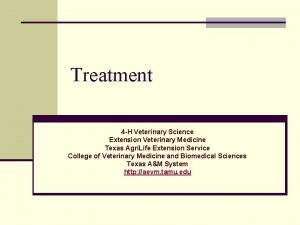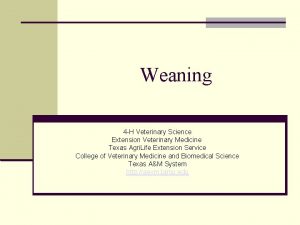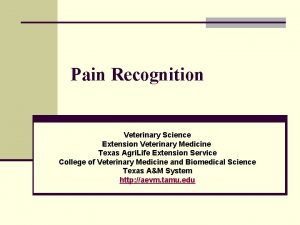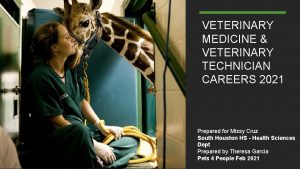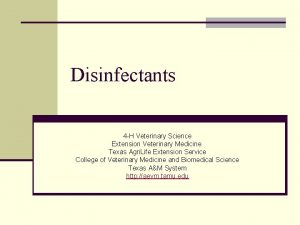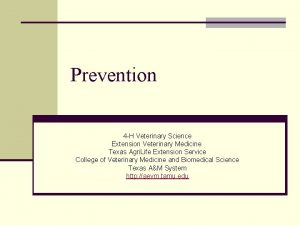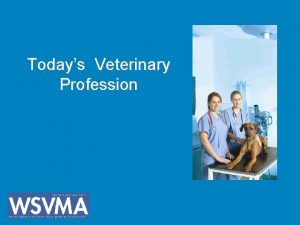Preventive Veterinary Medicine VM 544 Lecture 1 Introduction















- Slides: 15

Preventive Veterinary Medicine VM 544 Lecture 1 Introduction Part I

Introduction Paul C. Bartlett DVM, MPH, Ph. D Board certification in preventative medicine • Am. Col. Vet. Prev. Med. • Am. Co. . Vet Prev. Med. – Epidemiology Specialty Epidemic Intelligence Service – Centers for Disease control and Prevention Contact information: A-107 VMC 3 -2937 Office 3 -5941 Secretary Bartlett@cvm. msu. edu (best method of contact)

Introduction BA – U. of Wisconsin – Madison Masters of Public Health (Epidemiology U. of Minnesota – Mpls. DVM – U. of Missouri Ph. D – Ohio State U. – Columbus Research: Antimicrobial resistance, dairy epidemiology, foodborne outbreaks, syndromic surveillance, www. RUSick 2. msu. edu

Course Documents Black Board Used for almost everything Read the two documents in “Course Information” Avoid printing documents ahead of time due to possible changes Get used to not having a hard copy of everything. Download files onto floppies or whatever. Options for note taking Take supplemental notes by hand Insert your notes into a hard copy Type notes on Power. Point or word processor

Grading Quizes every Monday (about 8) Not cumulative Final exam is 20% (cumulative) Old quizzes on the course homepage

Required Readings They really are required! Many quiz questions will come directly from them Are not a review of the lecture material Are essential for a passing grade No text to purchase. Most all readings are on the web.

Design of the Course Unit 1 - Veterinary Public Health and Environmental health Unit 2 - Food Hygiene Unit 3 - Regulatory and Industrial Veterinary Medicine

Guest Speakers There are many guest speakers. They are not given monetary compensation. Interested in their specialty Interested in you Please be very considerate. All complaints should go to me They are all experts in their respective fields and are carefully selected. Make contacts – take names!

Guest Speakers Advantages Provide current information Personal examples of different career paths, diversity and scope of the veterinary profession Expands students views of the veterinary profession Disadvantages Due to varying schedules, there needs to be flexibility in our lecture schedule. Continuity? ? ? None in this course or in vet prev medicine.

Who is the course for? Private Practice (Focus for most of the 4 -yr. Curriculum) Public health Relate to regulatory programs Many vets leave private practice Public Practice / Gov. and Corp Vet. Practice / Vet Preventive Medicine Mission: Survey career possibilities – expand horizons.

Government and Corporate Vet. Practice ~ Vet. Prev. Med. About 25% of all veterinarians I am the unofficial representative for: Public practice on and off campus rotations Summer jobs “Real” jobs after graduation If interested, come see me before your clerkship selection.

The Michigan Market for Regulatory Veterinarians According to information derived from Dr. Winston Felton (USDA: FSIS) Dr. Laurie Granger (MI Dept. of Agriculture) Dr. Reed Mc. Carthy (USDA: APHIS: VS) There are two to three times more jobs for veterinarians in this field than there are interested veterinarians to fill these positions.

Regulatory Veterinarians In 2002 there were 30 unfilled positions for veterinarians in the field of regulatory medicine in Michigan. If this trend continues, the profession of vet. med. will eventually lose its role in population -based food animal disease control This year USDA needs about 14 vets in MI. Public health positions are available. These positions will eventually go to non-vets if our profession abdicates.

Preparing for a Career in Vet. Prev. Med. Many decide in vet. School More want to practice for a few years before moving to career in prev. med. If you may want to work in Prev. Med. : Select appropriate clerkships Make contacts Get experience

Regulatory Veterinarians The regulatory Veterinarians surveyed (Felton, Reed, Granger) believed: The most useful courses an aspirating regulatory vet should take are those in the field of food animal production and medicine. The average DVM student graduating from MSU is most lacking in skills regarding food animal medicine, disease control and public health.
 Preventive veterinary medicine
Preventive veterinary medicine Dragan ilic monash
Dragan ilic monash Preventive medicine near patterson
Preventive medicine near patterson Lincoln memorial university college of veterinary medicine
Lincoln memorial university college of veterinary medicine Faculty of veterinary medicine cairo university logo
Faculty of veterinary medicine cairo university logo Veterinary and pharmaceutical university brno
Veterinary and pharmaceutical university brno دانشگاه دامپزشکی تهران
دانشگاه دامپزشکی تهران Ethical issues in veterinary medicine
Ethical issues in veterinary medicine Faculty of veterinary medicine cairo university
Faculty of veterinary medicine cairo university Veterinary medicine
Veterinary medicine Cairo university faculty of veterinary medicine
Cairo university faculty of veterinary medicine Bandsaw maintenance checklist
Bandsaw maintenance checklist 01:640:244 lecture notes - lecture 15: plat, idah, farad
01:640:244 lecture notes - lecture 15: plat, idah, farad Vet
Vet Ntp544
Ntp544 Aci committee 544
Aci committee 544
